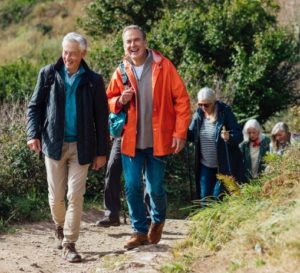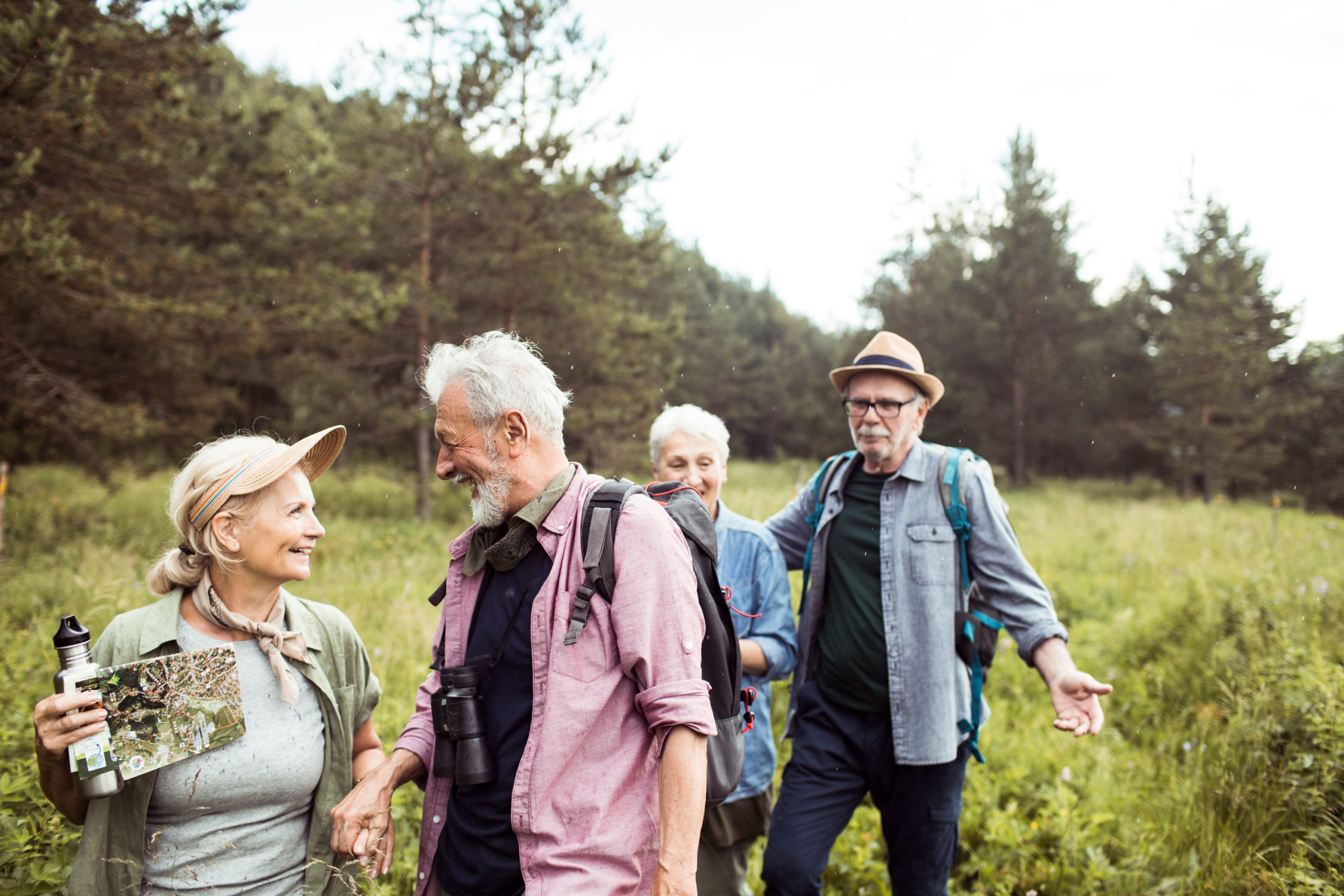Lifestyle and Living
Take a Hike! The Benefits of a Walk in Nature
Dec 2021 | By Catherine Daley
You don’t have to be a tree hugger to love hiking
The earliest use of the term ‘hiking’, which described the activity of walking for recreation, was documented in 14th-century Europe. In comparison to going for a leisurely walk, hiking takes place in nature and generally requires more effort due to elevation changes and strenuous terrains.
This country is fortunate to have the Trans Canada Trail – the world’s longest network of multi-use recreational trails. Currently at 28,000 kilometres, the trail continues to grow across every province and territory.
Benefits that extend beyond boundaries 
During the pandemic, 95% of Canadians who hiked said that their increased trail use was prompted by a desire to enhance their mental health.
Because hiking is generally on steeper paths, this activity burns more calories than walking, and improves lower body strength. But you don’t have to march along vigorous trails to achieve the feel-good advantages associated with this type of workout. Hiking can be a low-intensity exercise along paved trails that still help to maintain a healthy lifestyle.
If you can incorporate some hills in your route, you’ll get you heart pumping for a good cardio workout. And because it’s a weight-bearing exercise, it helps to boost bone density and build muscle mass. Hiking can help to lower your blood pressure, lower your cholesterol levels and lower your body fat. But the most natural benefits that you receive from nature are lower stress levels, an improved mood, and an enhanced sense of wellbeing.
Sole searching leads to soul searching
One of the most important things before striking out any lengthy venture, is to make sure that you have comfortable footwear. As we age, this becomes more important, because our feet change. They don’t necessarily get longer, but they may get wider because the tissue is less tight, which may lead to sagging arches. Plus, your feet can develop deformities, such as bunions and hammertoes.
Make sure you try on shoes before purchasing. Brands and styles are not consistent in sizing. To ensure a proper fit, there should be no more than a quarter of an inch between the heel and the back of the shoe when standing. You don’t want your foot to slide or to move around. Good footwear should provide stability, and if they fit properly, they promote better circulation, and prevent corns and calluses from forming.
If you require orthotics, consult an orthopedic specialist for advice on choosing the right pair. A rubber sole and a good tread are recommended in order to prevent slipping. There’s nothing worse than experiencing pain from the type of footwear that you’re wearing, and not being able to appreciate your surroundings.
The only thing that you really need is you
 Like any sport or activity, there are those who are very serious and take it to the nth degree. If you feel like hiking is out of your league because you don’t have the right gear, it will become a deterrent. But maintained trails and paths don’t require extra exertion or equipment for those just starting out on this new adventure.
Like any sport or activity, there are those who are very serious and take it to the nth degree. If you feel like hiking is out of your league because you don’t have the right gear, it will become a deterrent. But maintained trails and paths don’t require extra exertion or equipment for those just starting out on this new adventure.
To kick it up a notch, trekking poles are an advisable add-on for extra stability and an upper body workout. But for a casual excursion, you should always pack a daypack with water, snacks and a lightweight jacket. Moisture-wicking clothing is something that you might want to consider, and synthetic or wool socks are preferable. It all depends upon your location as to whether you’ll need bug spray, rainwear, a first-aid kit, a compass, etc.
You still don’t have to hug that tree if you don’t want to, but evidence suggests that due to certain organic compounds that trees exude, just being around them boosts your disposition and your psychological welfare.

